

“We know from research, that movement is important for learning.”
- Allison Potts, Mental Health Leader, Durham District School Board, ON[1]



“We know from research, that movement is important for learning.”
- Allison Potts, Mental Health Leader, Durham District School Board, ON[1]

As students return to class, many may feel stressed and anxious. Social and emotional learning (SEL) is more important than ever to help improve students’ mental well-being.
The new Self-regulation Classroom Cruiser from Copernicus is designed to provide opportunities for students, grades PreK-6, to self-regulate through movement without having to leave or disrupt the class. It is ideal for inclusive environments and helps kinesthetic learners and any student who needs to get the wiggles out so they can refocus and engage in learning.
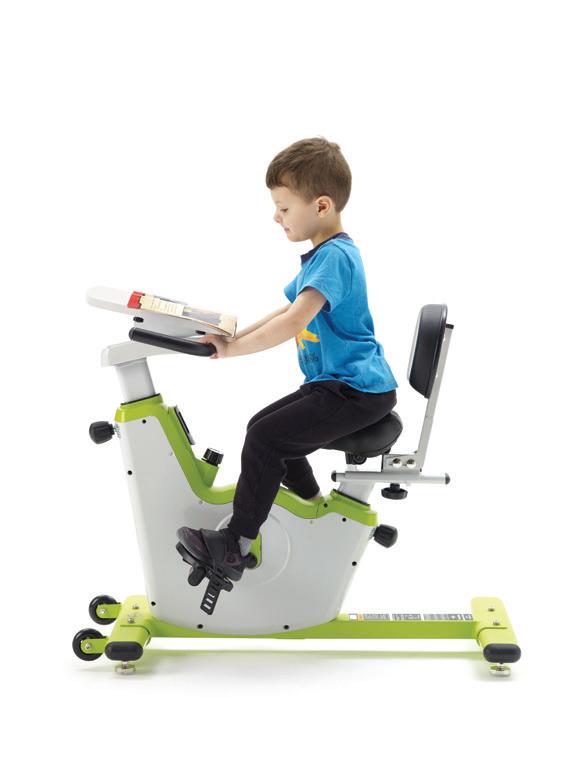

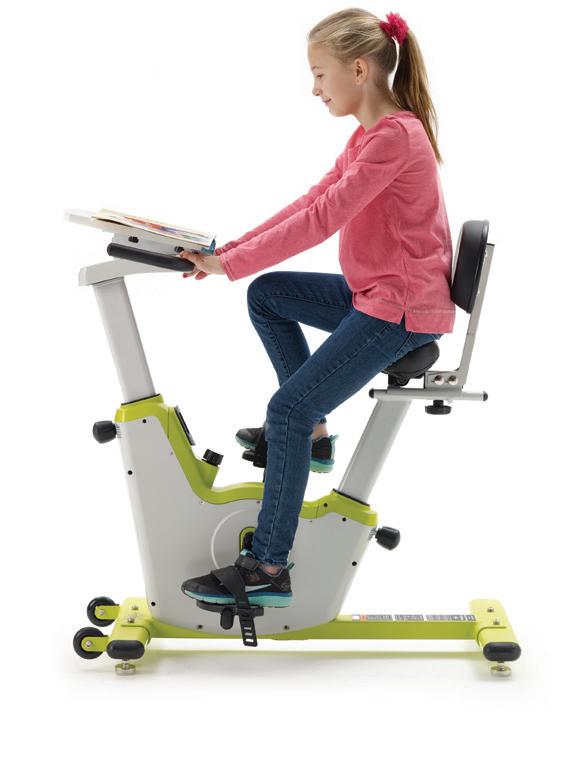
Designed for fit, riding comfort and safety for students grades PreK-6.
7 million testing cycles!
This bike is built to last.
We worked with teachers from our Idea Lab educator advisory team and ergonomic and engineering consultants who design high-end bikes to develop the new Copernicus Self-regulation Classroom Cruiser. It is an affordable and durable solution specifically designed for rugged classroom environments and is ideal for student-led self-regulation.
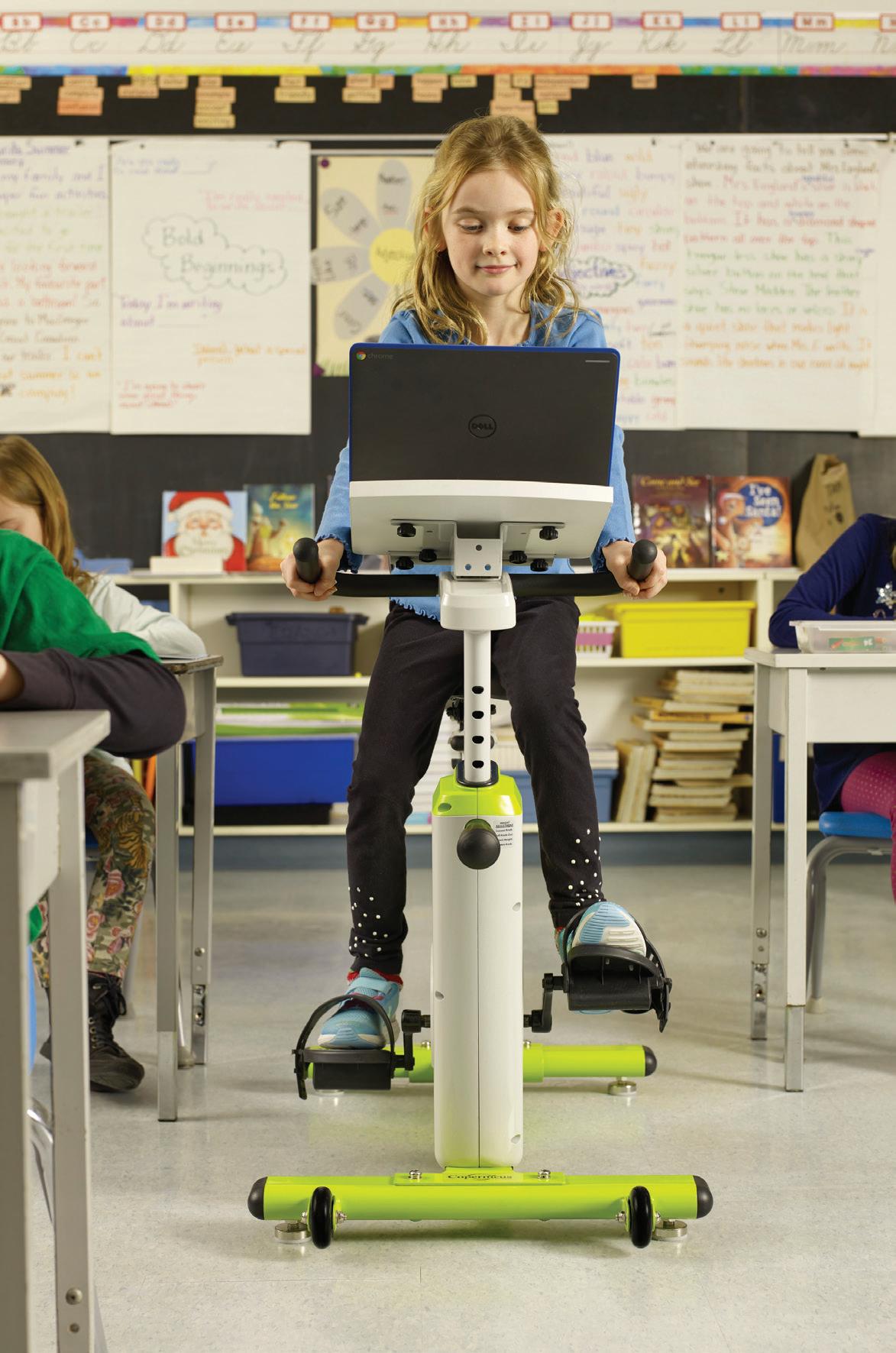
Without interrupting a lesson, students can hop on the bike and quietly burn off energy (or get the wiggles out). In just a ten minute ride, students can become more engaged and ready to learn.
Our bike exceeds standard testing of 100,000 cycles required for home and commercial use bikes; with over 7 million testing cycles, this bike is built to withstand all the miles you can put on it. It’s fully adjustable to create the safest ergonomics for students. Plus, it’s low maintenance.
The Self-regulation Classroom Cruiser can be used within a classroom and moved around as needed or used in body break rooms. It can be adjusted quickly to accommodate different sized students.
Movement, balance and self-regulation
• Rhythmic movement, such as pedaling, has a calming effect on the nervous system and helps us self-regulate
Integrated classrooms
• Many learning disabilities make it difficult for students to sit still and concentrate
• The bike allows students to remain in the classroom and take a break (and not be centered out or miss part of the lesson)
Kinesthetic Learners
• Kinesthetic learners learn best when they incorporate movement
Learning outcomes
• There is substantial evidence that suggests physical activity is linked to positive academic and behavioral outcomes including improved self-regulation and cognitive skills.[2,3,4,5,6,7]
• A study has shown that even 10 minutes of physical activity can have positive cognitive outcomes.[8]
Childhood obesity and sedentary lifestyles
• Time and funding for physical education has decreased[9,10]
• Research shows a relationship between increased sedentary behaviors with weak academic performance[11,12]
Designed specifically for students PreK-6
Durable build exceeding commercial standards
Quiet drivetrain to minimize distraction
Fully adjustable for the safest ergonomics
Low maintenance
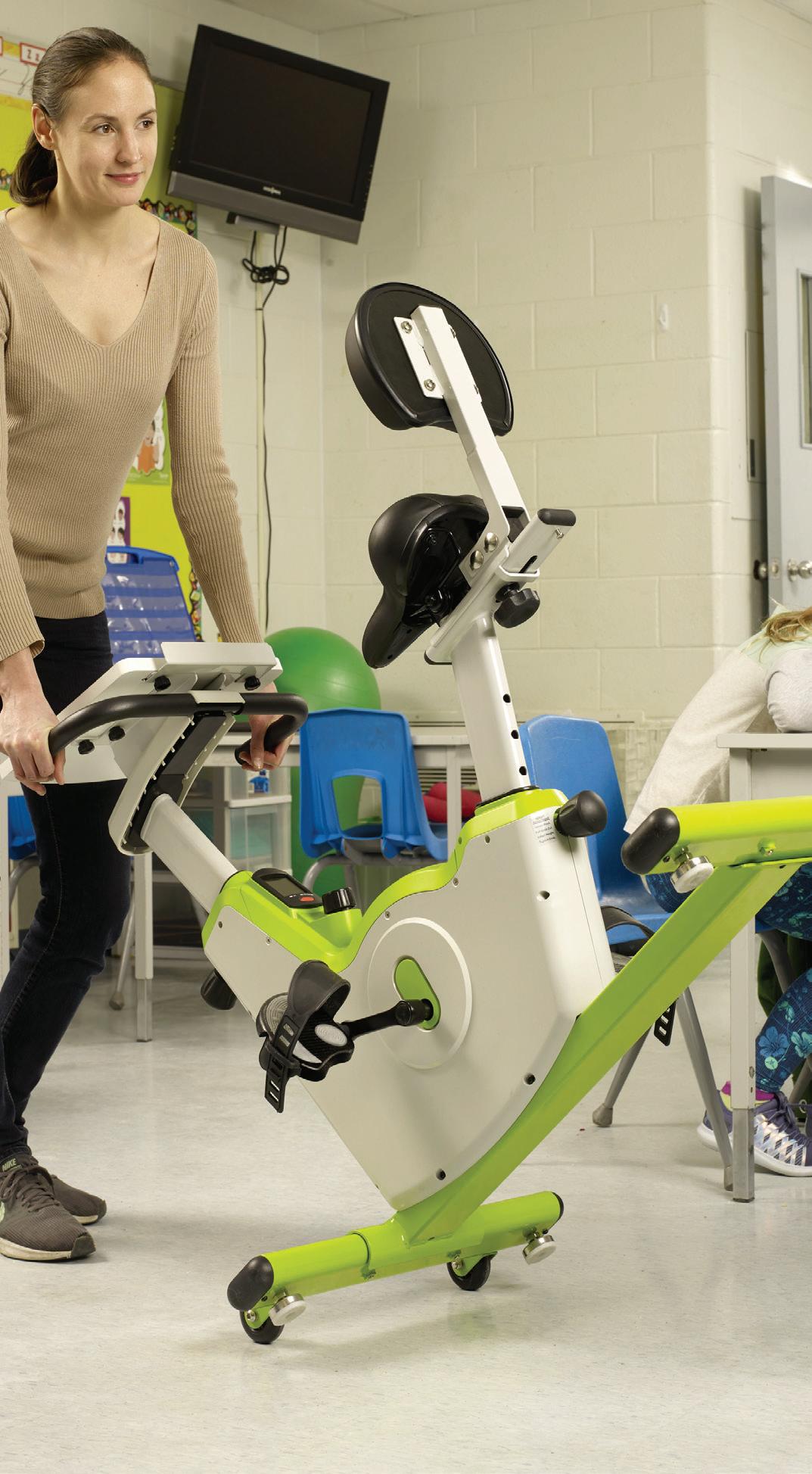
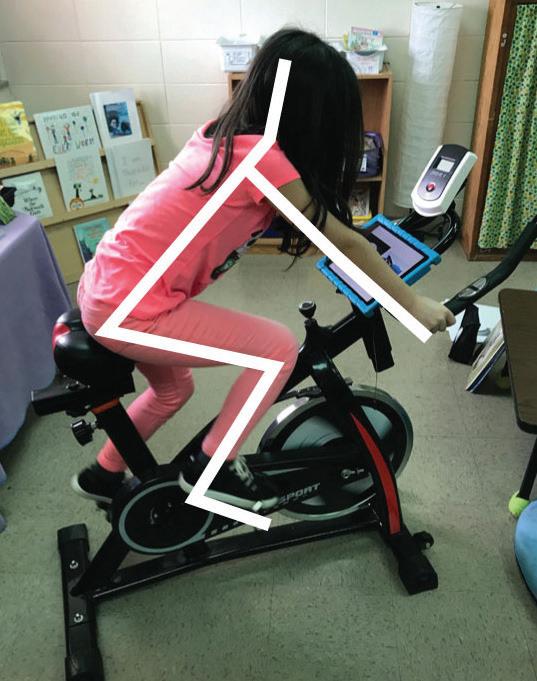

Safety and ergonomics
• Our bikes are designed specifically for student-sized riders
• Proper ergonomics are critical for rider safety. Unlike adult-sized stationary bikes that suit only a limited range of riders, our bike is fully adjustable to prevent injury.
• The covered drivetrain prevents little fingers (or anything else) from the moving parts
Designed for classroom environments
• Very quiet enclosed drivetrain to reduce distraction
• Digital display and work surface integrate into classroom activities
• Easy to move and requires no maintenance
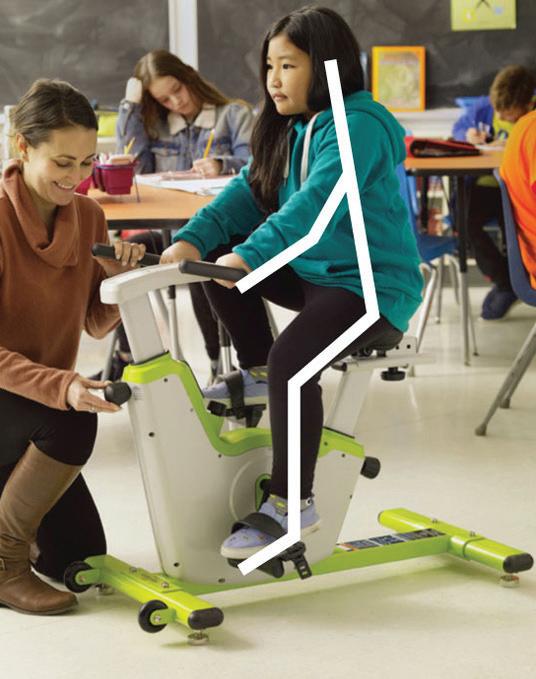 When a student rides an adult-sized stationary bike, ergonomics and safety are compromised
Designed with ergonomics specifically for student-sized riders
Casters allow for the bike to be easily moved around the classroom
When a student rides an adult-sized stationary bike, ergonomics and safety are compromised
Designed with ergonomics specifically for student-sized riders
Casters allow for the bike to be easily moved around the classroom
Self-regulation Classroom Cruiser - Grades PreK-2 with desktop (SCC100)
Features:
• Fully adjustable seat and handlebars accommodate PreK-2 students

• Quiet drivetrain to minimize distraction
• Enclosed fly wheel for safety
• Multi-position work surface for reading or writing
• Adjustable magnetic resistance to set difficulty level
• Built-in display to track distance, speed, time, RPM and calories burned (batteries included)

• Low maintenance
• Includes casters and is light enough to easily move around the classroom
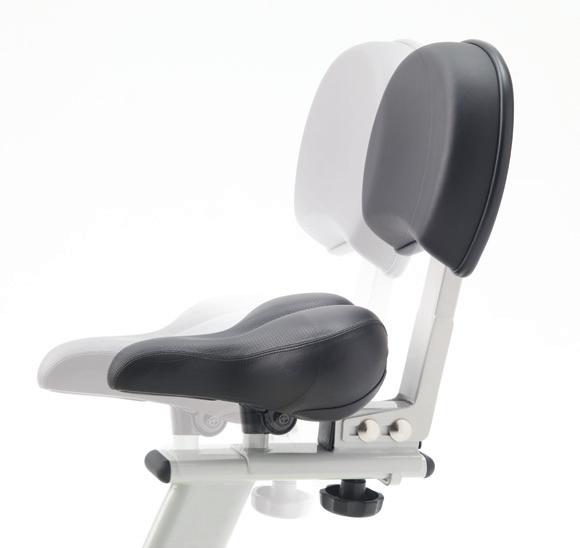


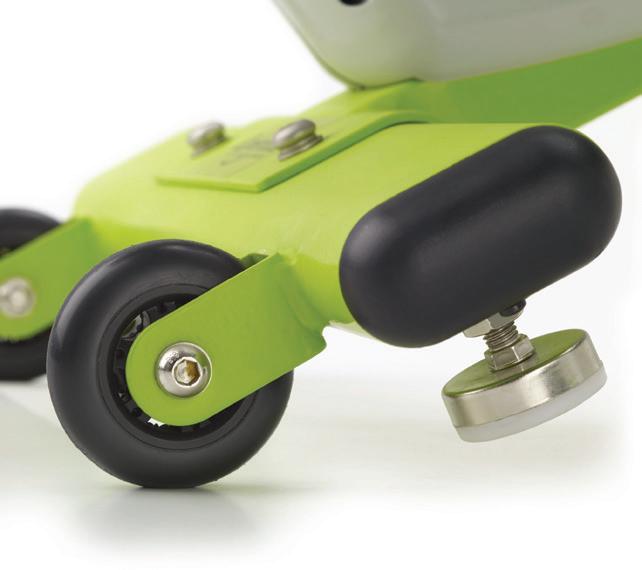

Additional model for grades 3-6 (SKU SCC200)
Self-regulation Classroom Cruiser – Grades PreK-2 (SCC102)
• Same features as the model above, but without the desktop or backrest, (handlebars included).
Additional model for grades 3-6 (SCC202)
Dimensions
37” L x 22” W (base footprint)
Height varies by seat and handlebar setting
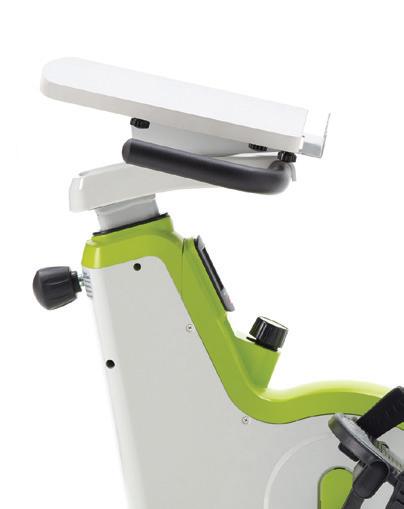
Warranty
6 year frame
2 year moving components
Levelers ensure that the bike sits evenly on floor and casters make moving easy Pedals include adjustment straps for added grip and safety Built-in display to track distance, speed, time, RPM and calories burned (batteries included) Model with work surface and backrest (SC100) Work surface in writing position (SC100, SC200) Model without the work surface and backrest (SC202)Multi-position work surface for reading or writing (models SCC100 and SCC200 only)

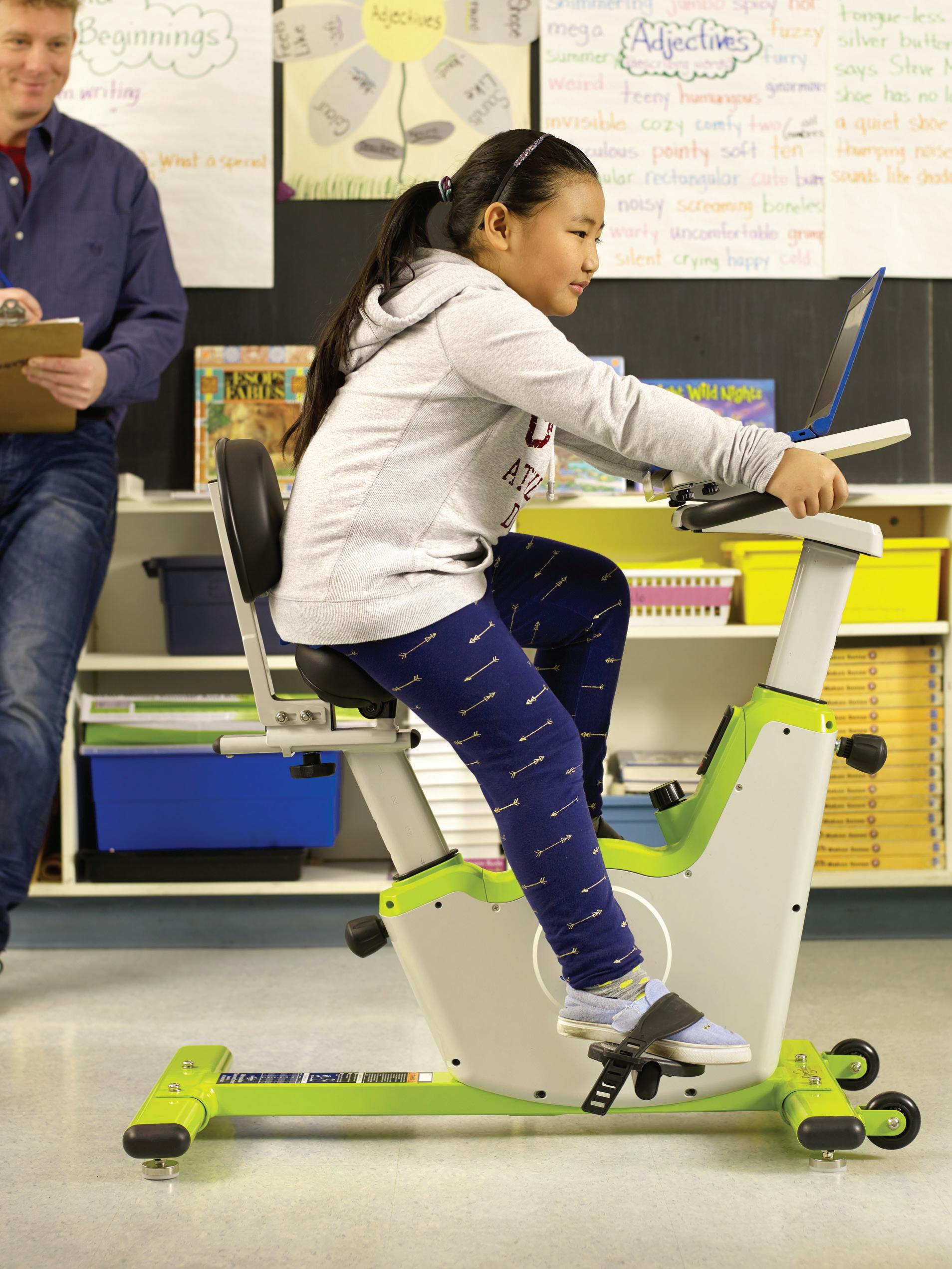
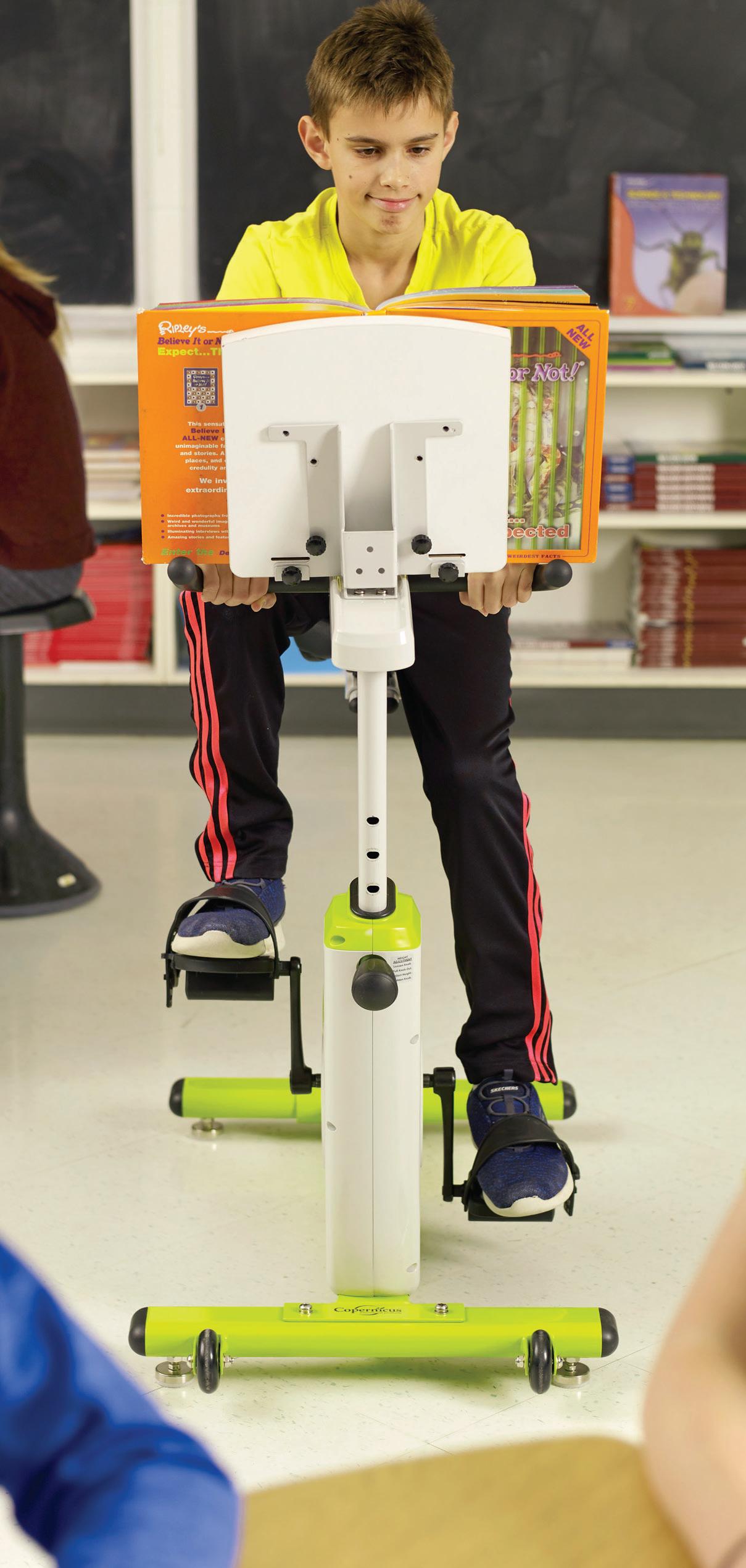
Improving a student’s ability to self-regulate reduces distractive behaviors because it helps them control impulses, tolerate frustrations and more.[2]
“Bikes help students regain focus and they can produce more work and remain in the classroom while having a physical/emotional break.” [2]
In a study of teachers’ perspectives on bike use in classrooms, 99% of respondents said they would recommend the implementation of a bike in the classroom.[2]
Visit ClassroomCruiser.com to download activity sheets, templates, watch videos and learn more.
Quiet drivetrain to minimize distractionFollert, J. (2017, May 11). Beyond the desk: Why Durham students are bouncing on balls, lying on the floor and riding bikes in class. Retrieved from https://www.durhamregion.com/news-story/7270762 beyond-the-desk-why-durham-students-are-bouncing-on-balls-lying-on-the-floor-and-riding-bikes-in-class/
2. Mueller, A., Wudarzewski, A., Avitzur, Y. (2017). Learning in Motion: Teachers’ Perspectives on the Impact of Stationary Bike User in the Classroom. International Journal of Learning, Teaching and Educational Research, Vol. 16, No. 3, pp. 15-28. Retrieved from https://www.ijlter.org/index.php/ijlter/article/view/873


3. Blaydes. J. (2012). Does Exercise Make You Smarter?. Retrieved from https://www.achper.org.au/blog/blog-does-exercise-make-you-smarter
4. National Physical Activity Plan Alliance (2018). The 2018 United States Report Card on Physical Activity for Children and Youth. Retrieved from http://physicalactivityplan.org/projects/reportcard.html
5. McGinn, D. (2017, June 5). Experts sound alarm as more schools put phys-ed on back burner. Retrieved from https://www.theglobeandmail.com/life/health-and-fitness/fitness/experts-sound-alarm-as-more schools-put-phys-ed-on-back-burner/article31934889/
6. U.S. Department of Health and Human Services (2010). The association between school based physical activity, including physical education, and academic performance. Retrieved from https://www.cdc.gov healthyyouth/health_and_academics/pdf/pa-pe_paper.pdf
7. Canadian Society for Exercise Physiology (2011). Canadian Sedentary Behaviour Guidelines For Children (aged 5-11 years) and Youth (aged 12-17 years) Clinical Practice Guideline Development Report. Retrieved from http://www.csep.ca
8. Samani, A., Heath, M. (2018). Executive-related oculomotor control is improved following a 10-min single-bout of aerobic exercise: Evidence from the antisaccade task. Neuropsychologia, 108 (2018), 73-81. Retrieved from https://doi.org/10.1016/j.neuropsychologia.2017.11.029

9. Baker, A. (2012, July 10). Despite Obesity Concerns, Gym Classes Are Cut. Retrieved from https://www.nytimes.com/2012/07/11/education/even-as-schools-battle-obesity-physical-education-is-sidelined.html
10. Long, C. (2017, March 28). When Physical Education is Cut, Who Picks Up the Slack? Retrieved from http://neatoday.org/2017/03/28/cuts-to-physical-education/
11. U.S. Department of Health and Human Services (2010). The association between school based physical activity, including physical education, and academic performance. Retrieved from https://www.cdc.gov healthyyouth/health_and_academics/pdf/pa-pe_paper.pdf
12. Syvaoja, H. (2015). How does physical activity affect learning? Retrieved from https://liikkuvakoulu.fi/sites/default/files/liikkuvakoulu_activebody_activemind.pdf
As a certified B Corp™, we are part of a community of like-minded businesses that want to use business as a force for good. We want to redefine what a successful business is by being directed and shaped through a social and environmental conscience.
Canada
8194 County Road 109, R.R. #3, Arthur, ON N0G 1A0
e: info@copernicused.com w: www.copernicused.com
t: 1 800 267 8494 or 519 848 3664 f: 1 519 848 5516
Copernicus Educational Products is not responsible for printing errors. Copernicus reserves the right to change or modify pricing and products specifications with or without prior notification. Illustrations and descriptions may not be exactly as shown. No part may be reproduced by any means without prior authorization of Copernicus Educational Products Inc. All rights reserved. 2023 ©
